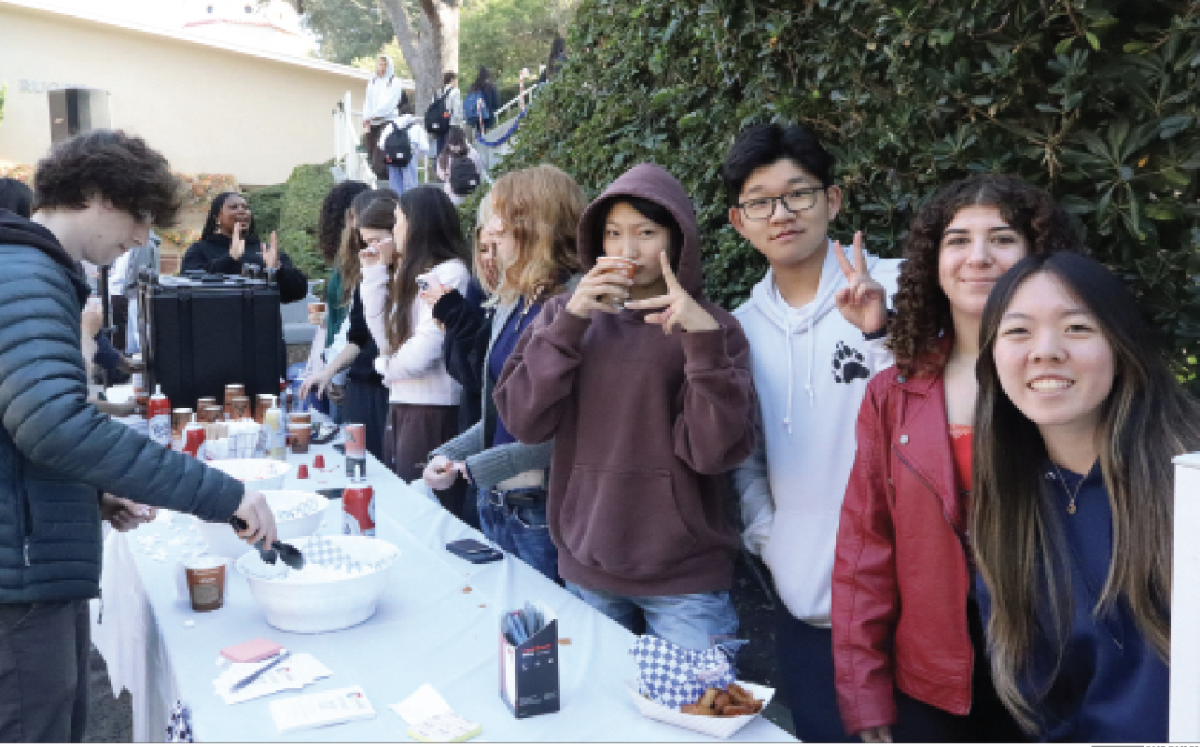By Austin Block
After almost three hours of searching, four seniors and a parent found the treasure: a large helium balloon attached to a video camera, heating pads and a cheap Boost Mobile cell phone.Â
About six and a half hours earlier and 53 miles away, they had launched the weather balloon, intending to capture video footage of Earthâs curvature. The balloon, originally six feet in diameter, swelled as it rose. It was approximately 20 feet in diameter, at about 80,000 above the ground, when it popped.
Though the camera ran out of batteries between 40,000 and 50,000 feet up, participant Adam Moelis â10 said the camera, which rotated in the wind inside the balloon, captured footage of the ground, mountains and other features of Earth from miles up.
“You can kind of see layers of the atmosphere if you pause it at the right moment,” Moelis said. “We pulled some pictures but theyâre low quality because itâs video.”
For Moelis, Ryder Moody â10 and Jacob Witten â10, the April 25 launch was the culmination of a yearâs worth of work in the Studies and Scientific Research class.
At the beginning of the school year, Moody and Witten saw that two MIT students had, on a low budget, launched a balloon with a time-lapse camera and taken pictures of Earthâs curvature.
“We decided that it looked really cool and [was] attainable on our budget so we decided to go for it,” Witten said.
The three spent the year preparing for the launch.
“Weâve been working on it all year just because [there are] so many variables that could go wrong,” Moelis said. “Some of them you can control, some of them you canât control but you want to maximize the chances that youâll be able to be successful and control what you can control. Thereâs a lot of things to take into account.”
Though weather conditions were an uncontrollable variable, the three students could control the descent rate of the parachute, prevent the camera and phone from freezing and calculate exactly how much helium was necessary to make the balloon lift fast enough.
They also had to get clearance from the Federal Aviation Administration for the launch, supply the FAA with the date, time and details of the launch, and notify the organization two weeks before the launch.
During the flight, they had to maintain contact with the FAA until the balloon returned to Earth.
 The process was not without obstacles. The April 25 launch was not the first time they tried to send up a balloon.
About a month earlier, their first attempt ended in disaster.
“We had a false start where we launched it and it just flew into a telephone pole,” Witten said. “We were all ready to go and it just didnât rise and it hit a telephone pole and everything broke.”
On the day of the successful launch, the time-lapse camera that the group intended to use would not turn on, and they had to substitute a video camera. They put the camera, heat warmers and phone inside a Styrofoam box and cut a hole in the box out of which the lens could poke.
Finding the balloon once it had landed posed further difficulties. The cell phone had no service higher than 5,000 feet up, so the group had to wait until it came back down to receive a signal from the phone.
The signal told them that the balloon was 53 miles east of the launch site.
The crew, made up of Moelis, Moody, Witten, fellow SSR student Ian Cinnamon â10, and Moodyâs father, drove to the landing area.
“It basically landed in the middle of the desert,” Witten said. “We actually had a GPS reading from when it was about 2,000 feet up, I believe, but nothing after that so we had about a square mile radius that we knew it was in, so we just wandered around in the desert. We werenât sure. We actually talked to a helicopter company. We called to see how much it would cost for them to do a flyby but just as they were calling us back we found it.”
Then came the press. On May 12, a KNBC crew descended on the Upper School to film a piece on the teamâs accomplishment. The crew interviewed the students and their teacher, Antonio Nassar. The students showed the crew their Styrofoam box setup.
The piece aired on Channel 4, KNBC, during the 5 p.m. news, on Friday May 14.
Moelis said the group intends to launch the balloon over the summer, this time with a time-lapse camera.
“We really want to [launch another balloon] because we have all the stuff,” Moelis said. “We could be ready to launch even tomorrow because we have everything. We would just need helium and another balloon. And because our camera ran out we really want to do it again. Weâre going to make sure the battery lasts this time. Hopefully we wonât have a camera issue and if all goes as planned, yes we will do it again and hopefully weâll get a camera working up to 80,000 feet this time. That would be awesome.”
The team presented their project to the faculty last week.
The students now have to compile what Moelis called a “detailed overview” of the project for subsequent students to imitate. They also made a poster for the Science, Technology, Engineering and Math festival on Monday.
“Watching [the balloon] go up was an amazing experience,” Witten said. “It was just like everything we had done the whole year just seemed worth it.”




























